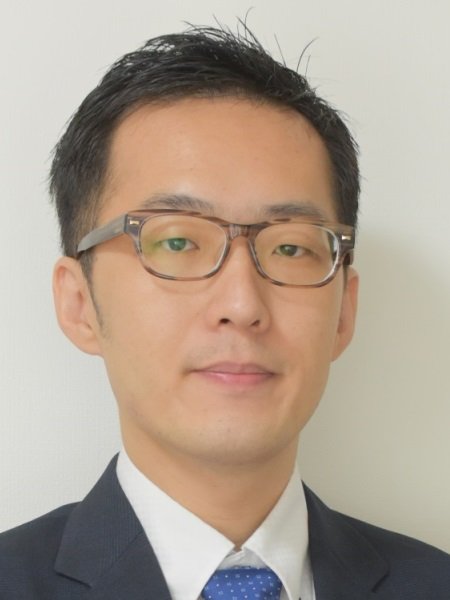AN Qi
(Associate Professor/Division of Environmental Studies)
Department of Human and Engineered Environmental Studies/Human motor control theory, Rehabilitation robotics

Career Summary
- 2009: Graduated from Faculty of Engineering (The University of Tokyo)
- 2011: JSPS Research Fellowship for Young Scientists (DC1)
- 2014: Received engineering doctorate from The University of Tokyo
- 2014: Visiting researcher (Technical University of Munich)
- 2015: Assistant Professor (The University of Tokyo)
- 2020: Associate Professor (Kyushu University)
- 2022: Associate Professor (The University of Tokyo)
Educational Activities
NA
Research Activities
- Clarification of the mechanisms of human standing-up motion in different environments (2008-):
We revealed that when humans realize standing movements in environments with different chair heights and movement speeds, there is cooperative activity of multiple muscles, called muscle synergy. Also we found that humans adaptively realize movements in response to the environment by adjusting the amplitude and duration of these synergies (Ref. 1). - Understanding the recovery process of hemiplegic patients (2016-):
We investigated how motor function improves when physical therapists intervene with hemiplegic patients after stroke. We newly revealed that the combination of muscle synergy is maintained, but the weight coefficient of activity changes as a result of physical therapy (Ref. 2, Ref. 3). - Development of a smart handrail system to diagnose motor function (2018-):
We focus on the fact that people with impaired motor function rely on welfare equipment such as handrails to achieve movement. From this findings, we developed a system to estimate the degree of motor function with high accuracy from only the force information applied to handrails without attaching sensors to the user (Ref. 4).
Literature
- Qi An, Yuki Ishikawa, Tetsuro Funato, Shinya Aoi, Hiroyuki Oka, Hiroshi Yamakawa, Atsushi Yamashita and Hajime Asama, "Muscle Synergy Analysis of Human Standing-up Motion in Different Seat Heights and Speeds", Transactions of the Society of Instrument and Control Engineers, vol. 50, no. 8, pp. 560-568, 2014 (In Japanese).
- Hiroki Kogami, Qi An, Ningjia Yang, Hiroshi Yamakawa, Yusuke Tamura, Atsushi Yamashita, Hajime Asama, Shingo Shimoda, Hiroshi Yamasaki, Matti Itkonen, Fady Alnajjar, Noriaki Hattori, Makoto Kinomoto, Kouji Takahashi, Takanori Fujii, Hironori Otomune and Ichiro Miyai, "Effect of Physical Therapy on Muscle Synergy Structure during Standing-up Motion of Hemiplegic Patients", IEEE Robotics Automation Letter, vol. 3, no. 3, pp. 2229-2236, 2018.
- Ningjia Yang, Qi An, Hiroki Kogami, Hiroshi Yamakawa, Yusuke Tamura, Kouji Takahashi, Makoto Kinomoto, Hiroshi Yamasaki, Matti Itkonen, Fady S. Alnajjar, Shingo Shimoda, Noriaki Hattori, Takanori Fujii, Hironori Otomune, Ichiro Miyai, Atsushi Yamashita, and Hajime Asama, "Temporal Features of Muscle Synergies in Sit-to-stand Motion Reflect the Motor Impairment of Post-Stroke Patients", IEEE Transaction on Neural Systems and Rehabilitation Engineering, vol. 27, no. 10, pp. 2118-2127, 2019.
- Qi An, Ningjia Yang, Hiroshi Yamakawa, Hiroki Kogami, Kazunori Yoshida, Ruoxi Wang, Atsushi Yamashita, Hajime Asama, Shu Ishiguro, Shingo Shimoda, Hiroshi Yamasaki, Moeka Yokoyama, Fady Alnajjar, Noriaki Hattori, Kouji Takahashi, Takanori Fujii, Hironori Otomune, Ichiro Miyai, and Ryo Kurazume, "Classification of Motor Impairments of Post-stroke Patients based on Force Applied to a Handrail", IEEE Transactions on Neural Systems and Rehabilitation Engineering, vol. 29, pp. 2399-2406, 2021.
Other Activities
Institute of Electrical and Electronics Engineers (IEEE)
The Japan Society of Mechanical Engineers (JSME)
The Society of Instrument and Control Engieers (SICE)
The Robotics Society of Japan (RSJ)
Future Plan
This laboratory conducts research and development of robots and diagnostic systems to assist people with movement disorders caused by various diseases and aging.
In order to actually provide movement support and rehabilitation, it is necessary to understand the mechanisms by which humans achieve movement as fundamental research, and it is important to utilize this understanding in support systems.
I would like to conduct a wide range of research, from fundamental research to elucidate the mechanisms of human motion to applied research to develop assistive technologies, in order to realize a society where many people can lead independent lives.
Messages to Students
At the university, you can conduct research and development based on free ideas. I think the Graduate School of Frontier Sciences is a very good environment for concentrated research. I look forward to enjoying our research together.
